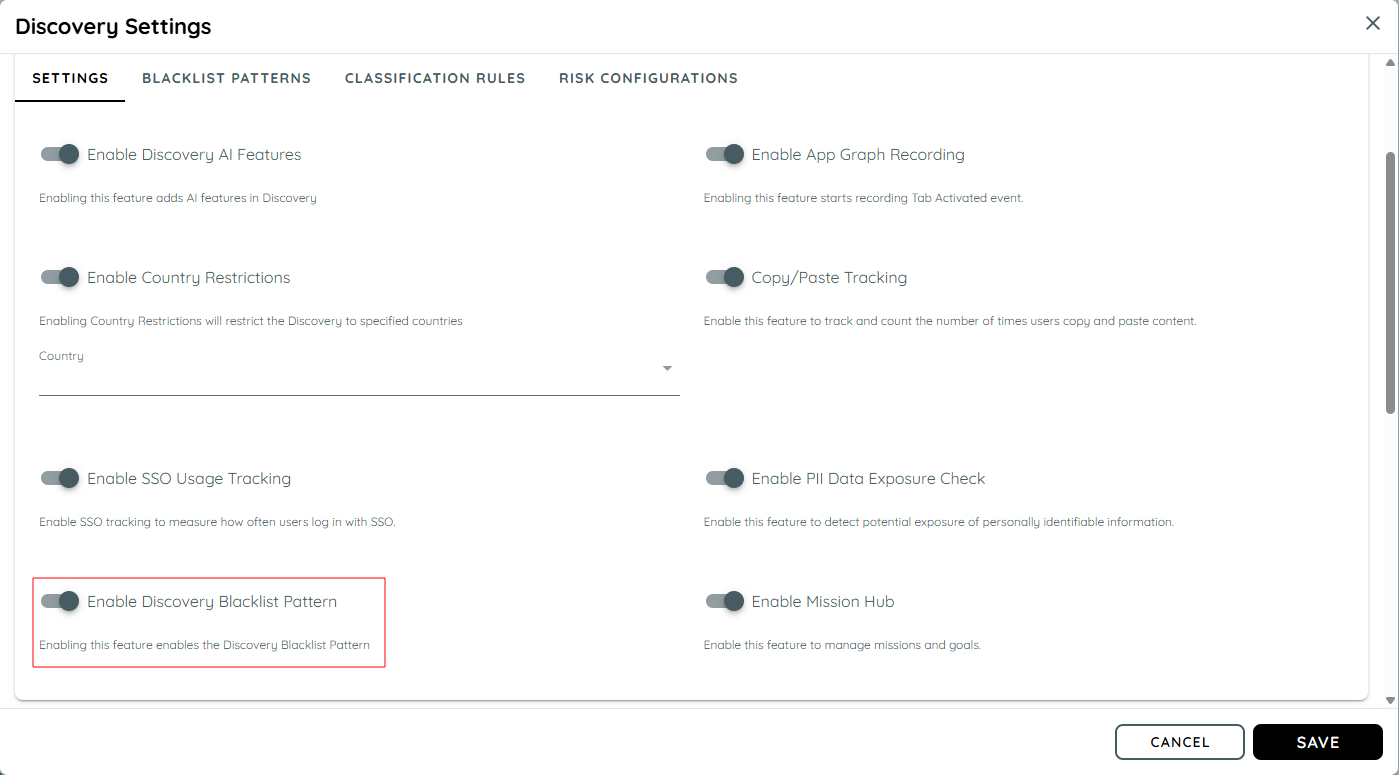Blacklist
Application Blacklist Curation and Governance
AppNavi automatically discovers web applications used by employees through the AppNavi Chromium Extension.
To ensure that discovery results remain business-relevant, non-business related applications are filtered out.
Global Blacklist
AppNavi maintains a global list of applications that are classified as non-business relevant.
This list is curated and maintained by the AppNavi Product Team.
Input Sources
The global blacklist is continuously updated based on three different input streams:
| Source | Description |
|---|---|
| Public Data Sources | AppNavi monitors multiple available sources on the internet and known industry lists to identify private entertainment, private streaming, gaming or similar applications without business relevance. |
| Customer Feedback | Customers may add or remove applications within their tenant blacklist. These signals are recorded and influence classification improvements. |
| Product Team Expert Review | Signals that are ambiguous or low confidence are manually reviewed, validated and classified by the AppNavi Product Team. |
Automated Evaluation
Customer feedback from tenant blacklists is automatically evaluated.
Signals are compared with:
- current global classification state
- signal density / frequency across tenants
- historical behavior trends
If confidence is sufficiently high, AppNavi may automatically adopt the classification.
If confidence is not sufficient, the signal is forwarded for Product Team review.
Why This Exists
This process ensures that AppNavi:
- reduces noise for all customers
- avoids discovery of clearly non-business apps
- keeps discovery smart, actionable and relevant
- continuously improves based on actual usage patterns across tenants
Manage Blacklist
The management of blacklist updates is handled in Discovery Settings, where users have the capability to update the blacklist globally at the tenant level. Any new or modified patterns are promptly incorporated into the blacklist, ensuring its efficacy and relevance.
Certain predefined rules are applied to this procedure, which are delineated as follows.
- Duplication of patterns is prohibited, ensuring that users cannot create duplicate patterns either locally or globally.
- Any patterns that have been globally deleted or disabled, and remain unaltered at the tenant level, will not be included in the updated blacklist for the respective tenant.
- In the event that globally deleted or disabled patterns have been modified or interacted with at the tenant level, they will be integrated into the updated blacklist for the specified tenant.
- Applications listed in the blacklist will not be identified as discovered apps at the client-side. Moreover, once an application has been discovered and subsequently added to the blacklist, it will cease to exhibit any activity on the client side.
Below are the functionalities available to users at the Discovery Setting:
- Pattern Creation: Users can generate new patterns.
- Pattern Editing: Users have the ability to modify existing patterns.
- Pattern Deactivation/Activation: Users can deactivate or activate patterns according to their preference.
- Pattern Deletion: Users are permitted to delete patterns at the tenant level; however, it's important to note that if the blacklist is updated, deleted patterns will reappear.

Steps:
- Navigate to the discovery overview
- Click on the three dots button to open the discovery settings
- In the settings dialog the Discovery blacklist pattern toggle will visible
- After enable a Blacklist Pattern section will visible

Updated 20 days ago